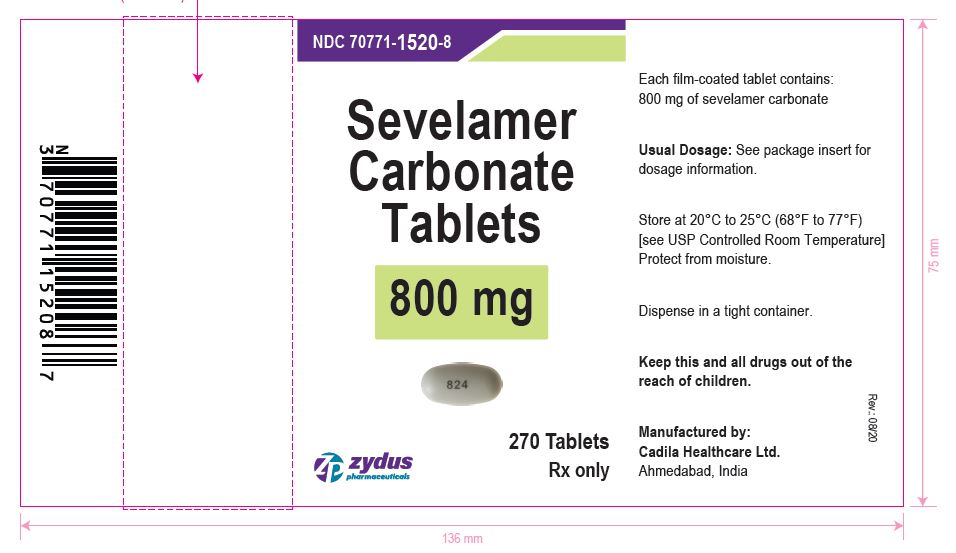Sevelamer is a powerful medication used to treat chronic kidney disease. It works by effectively controlling high levels of phosphorus in the blood, a condition known as hyperphosphatemia. By doing so, Sevelamer helps reduce the chances of developing bone and heart problems, which are common complications of kidney disease.
Our goal in this article is to provide you with a comprehensive understanding of Sevelamer, empowering you with the information needed to make informed decisions about your health.
What is Sevelamer?

Sevelamer, often prescribed under the brand names Renagel and Renvela, is a medication specifically designed to control hyperphosphatemia (elevated phosphate levels) in people with chronic kidney disease. But how does it work?
Sevelamer is classified as a phosphate binder. It operates by attaching itself to the phosphate in the food you consume, reducing phosphate absorption in your body and thereby decreasing your phosphate levels.
Renagel vs. Renvela: What’s the Difference?
Let’s differentiate between Renagel and Renvela. Both are Sevelamer, but with slight variations. Renagel contains sevelamer hydrochloride while Renvela consists of sevelamer carbonate. The choice between these two formulations often depends on the specific needs and medical condition of the patient.
What is Sevelamer used for?
Sevelamer is primarily known for its role in treating hyperphosphatemia. It is frequently prescribed to patients with chronic kidney disease. Its prime function is to lower high blood phosphorus levels by preventing dietary phosphate absorption from the gut.
The recommended dosage can vary depending on the severity of the disease and phosphorus levels. As outlined in the medication information leaflet, Sevelamer dosage should always be personalized:
- For patients with CKD on dialysis, the starting dose is usually 800 to 1600 mg, taken three times per day with meals.
- Adjustments are typically made in 800-mg steps every two to three weeks based on serum phosphorus levels.
Sevelamer should always be taken with food to maximize its effectiveness. The medication’s potency is closely tied to its presence during digestion when phosphate from food enters the gut.
How to Take Sevelamer and What Happens If You Miss a Dose
It’s important to take sevelamer exactly as your doctor tells you to. Here are some guidelines to follow:
- Take With Food: Sevelamer should be taken during meals to effectively remove phosphorus from the food you eat.
- Timing: It’s best to wait at least 1 hour after finishing a meal before taking the medication.
Following the prescribed dosing schedule is crucial for maintaining the right level of phosphate in your blood. Skipping doses or taking extra doses can have negative effects on your health.
Here’s what you should do if you happen to forget a dose:
- If you remember it well before your next scheduled dose, take the missed dose as soon as possible.
- If it’s already close to the time for your next dose, skip the missed one and continue with your regular dosing schedule.
It’s always a good idea to talk to your doctor if you have any questions or concerns about taking your medication properly.
What are the Side Effects of Sevelamer?
Sevelamer is a reliable medication when used correctly, but it’s essential to be aware of potential side effects and drug interactions:
- Side Effects: Common reactions include nausea, vomiting, constipation, or diarrhea. These are typically mild and temporary. However, if symptoms persist or worsen, promptly consult your healthcare provider. Pay close attention to unusual changes like muscle cramps, irregular heartbeat, or persistent stomach pain – these could indicate serious complications.
- Drug Interactions: Sevelamer can interact with certain medications such as antibiotics (like ciprofloxacin), thyroid medicines, or heart rhythm drugs. Always inform your healthcare provider about all the medications you’re currently taking, including over-the-counter drugs and supplements.
Knowing these precautions can help ensure safe and effective use of Sevelamer in managing your phosphorus levels.
How do I Store and Dispose this medication?
Proper storage conditions are crucial for maintaining the efficacy and safety of Sevelamer. To ensure the medication remains effective, adhere to the following guidelines:
- Store at room temperature, away from moisture and heat.
- Keep the container tightly closed when not in use.
- Place out of reach of children and pets to prevent accidental ingestion.
When it comes to disposal of medication, it’s important to follow specific steps to protect both the environment and others from harm:
- Do not flush the medication down the toilet or pour into a drain unless instructed to do so.
- Seek out a medication take-back program in your area; your local pharmacy may offer this service.
- If no take-back program is available, mix Sevelamer with an unpalatable substance, place it in a sealed container, and dispose of in the household trash.
Take note that proper handling of medications is a responsibility that contributes to overall health and environmental safety.
What Food or Medication Should I Avoid When I Take Sevelamer?
When taking Sevelamer, certain dietary and medicinal precautions are crucial for maximizing the drug’s effectiveness and minimizing potential adverse reactions.
Food to avoid with Sevelamer:
- High-phosphorus foods: As it is used to control phosphorus levels in the blood, it’s best to avoid or limit foods rich in phosphorus. These include:
- Dairy products like milk and cheese
- Nuts and seeds
- Beans and lentils
- Whole grains
- Calcium supplements: Taking large amounts of calcium with Sevelamer can affect its phosphate-binding action.
Medications that may interact with Sevelamer:
- Levothyroxine: This thyroid medication should be taken at least four hours before or after Sevelamer to prevent reduced absorption.
- Certain heartburn medications: Avoid using proton pump inhibitors or antacids that contain aluminum or magnesium with Sevelamer.
Patients should consult their healthcare provider for a comprehensive list of foods and medications to avoid. It’s essential to maintain a balanced diet while managing phosphorus intake, which may require the guidance of a dietitian familiar with chronic kidney disease.
Conclusion
Sevelamer is an important medication for managing chronic kidney disease. It plays a critical role in reducing high levels of phosphorus in the body, which is crucial for the overall health and well-being of patients. However, it’s important to note that the usage should be tailored to each individual.
Here are some recommendations for personalized advice and guidance:
- Consult healthcare professionals: As always please reach out to doctors or pharmacists who can provide detailed information about how to properly use Sevelamer.
- Discuss your medical history: Talk to your healthcare team about any existing health conditions or medications you’re taking to determine if Sevelamer is suitable for you.
- Regularly monitor phosphorus levels: Stay proactive in managing your condition by getting regular blood tests to check your phosphorus levels and ensuring they are within the target range.
Don’t hesitate to seek expert advice in order to navigate the complexities of chronic kidney disease treatment more effectively.
Read More: Best Multivitamin for Kidney Disease


